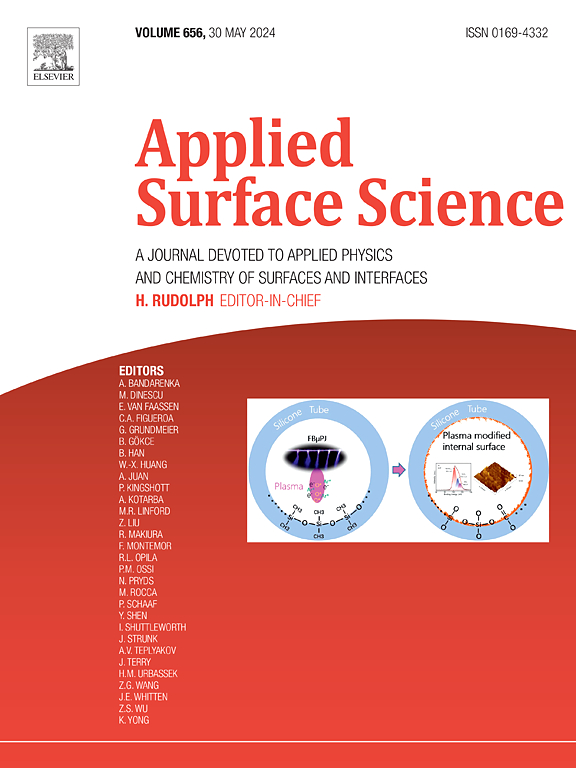Modulation of the chemical mechanical polishing performance of core-shell SnO2@CeO2 abrasives via the shape change
IF 6.3
2区 材料科学
Q2 CHEMISTRY, PHYSICAL
引用次数: 0
Abstract
The particle shape of abrasives used in chemical mechanical polishing (CMP) directly influences the polishing performance and surface quality. Here, a shape-modulation strategy is experimentally proposed for the first time to trade-off the material removal rate (MRR) and surface roughness (Ra), in which the core-shell structure SnO2@CeO2 abrasives were synthesized via a facile two-step wet-chemical method and the shape gradually transformed from sharp octahedron to smooth ellipsoid by changing the shell amount. Due to the combination of the higher hardness of the SnO2 core and the chemical tooth effect of CeO2, MRR is increased by 44.59 %–116.21 %, and Ra is reduced by 30.64 %–44.92 % compared to commercial CeO2 abrasives. The highest polishing efficiency (MRR = 533.33 nm/min) and the most remarkable flattening ability (Ra = 0.293 nm) were achieved during the polishing of TFT-LCD glass, indicating potential applications of such novel abrasive system and further confirming the key role of abrasive particle shape and geometry on the performance of CMP.

核壳磨料形状变化对化学机械抛光性能的影响SnO2@CeO2
化学机械抛光(CMP)中磨料的颗粒形状直接影响抛光性能和表面质量。本文首次实验提出了一种兼顾材料去除率(MRR)和表面粗糙度(Ra)的形状调制策略,通过简单的两步湿化学方法合成了核壳结构SnO2@CeO2磨料,通过改变壳的数量,磨料的形状逐渐从尖锐的八面体转变为光滑的椭球体。由于SnO2芯较高的硬度和CeO2的化学齿效应,与普通CeO2磨料相比,MRR提高了44.59 % ~ 116.21 %,Ra降低了30.64 % ~ 44.92 %。在TFT-LCD玻璃的抛光过程中,获得了最高的抛光效率(MRR = 533.33 nm/min)和最显著的压平能力(Ra = 0.293 nm),表明了这种新型磨料体系的潜在应用前景,并进一步证实了磨料颗粒形状和几何形状对CMP性能的关键作用。
本文章由计算机程序翻译,如有差异,请以英文原文为准。
求助全文
约1分钟内获得全文
求助全文
来源期刊

Applied Surface Science
工程技术-材料科学:膜
CiteScore
12.50
自引率
7.50%
发文量
3393
审稿时长
67 days
期刊介绍:
Applied Surface Science covers topics contributing to a better understanding of surfaces, interfaces, nanostructures and their applications. The journal is concerned with scientific research on the atomic and molecular level of material properties determined with specific surface analytical techniques and/or computational methods, as well as the processing of such structures.
 求助内容:
求助内容: 应助结果提醒方式:
应助结果提醒方式:


